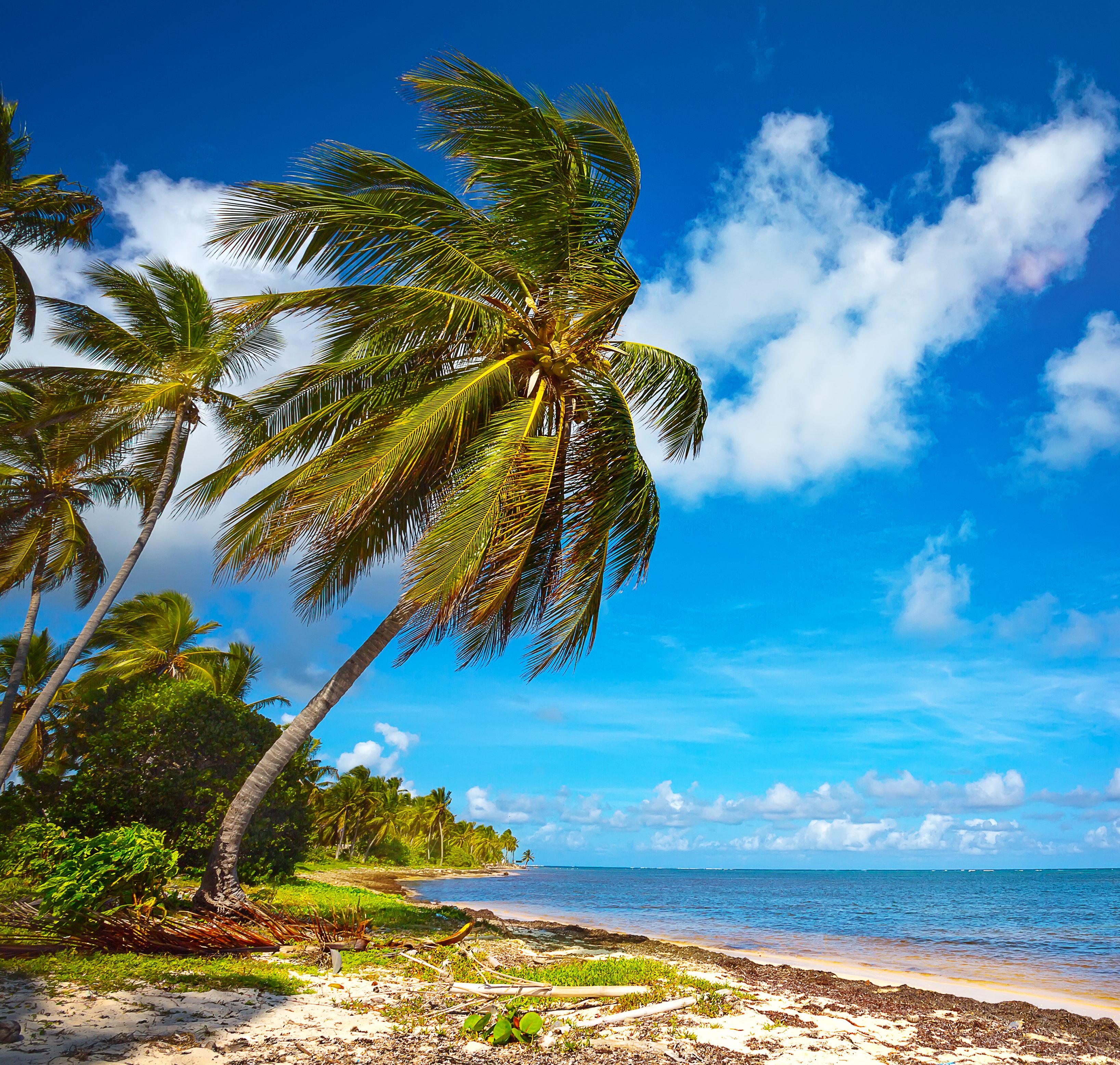According to Albert Herrer, senior vice president at luxury travel agencies network Virtuoso, many places affected by Irma should be fully repaired in time for winter travel, fingers crossed.
Still, just so we consider all the winter-break options, one way to get away to warmer climes and do some good at the same time is to book a trip to one of the more tourism-dependant-but-Irma-affected spots (but only after a discussion with a travel agent about safety and not being a burden on the local reconstruction efforts). Pushing this envelope even further, volunteering to assist with disaster relief on some of the harder-hit Caribbean islands might just be the most unforgettable and rewarding journey one could take.
But for those always in dire need of mind-and-nerves numbing rest and relaxation around mid-winter, there are some spots lucky enough to have completely escaped Irma and Maria’s wrath.
Costa Rica
This Central American country is becoming well known as an eco-vacation destination. Its beaches are plentiful but the sand is volcanic, so if feeling silky, white sand under one’s tired feet is what is desired, there might be some disappointment. But, for those keen on adventure, there is plenty of hiking in the rain forest and up the volcanoes, plus zip lining and rafting.
Curaçao
This Caribbean island sitting very close to Venezuela, is part of the Kingdom of the Netherlands. It has white sandy beaches, coral reefs and incredible marine life to snorkel in, but little rainfall or fertile soil which makes much of the land probably not the first-choice for those who enjoy rain-forest like nature.
St. Kitts and Nevis
Two islands for the price of one country! The Federation of Saint Kitts and Nevis is located in the West Indies, with the Caribbean Sea on the west and the Atlantic Ocean on the east. It is still developing its tourist industry, so the beaches are relatively crowd-free, while sight-seeing is plentiful: lava formations, tropical forest and lagoons, and several well preserved historical sites.
Los Cabos, Mexico
Los Cabos is a great alternative to the tourist magnet destinations like the Mayan Riviera, Cancun or Playa del Carmen which unfortunately did get affected by Irma. Added bonus: Los Cabos is the celebrities’ favorite Mexican destination so the amenities are highly amenable and first-class.
Aruba
This tiny Dutch Caribbean island off the coast of Venezuela has actually several different districts, each with a unique vibe all of its own. Beautiful beaches, dry, sunny weather, a European-Dutch influence, and a variety of languages— one might even learn how to speak Papiamento!
Cayman Islands
This British Overseas Territory is made up of three islands in the western Caribbean Sea. The largest, Grand Cayman, is known for its beach resorts, scuba diving and snorkelling. Next in size, Cayman Brac, attracts deep-sea fishers, and the smallest, Little Cayman, attracts a varied wildlife, from endangered iguanas to red-footed boobies.
Barbados
As an independent British Commonwealth nation, this eastern Caribbean island has a very Brit-like vibe, with afternoon tea and cricket being the favourite pastimes. Awesome beaches, botanical gardens and posh hotels abound, but it is hard to find digs that don’t cost an arm and a leg.
Jamaica
This Caribbean island nation has mountains, rainforests and reef-lined beaches. Most of the tourist action happens around Montego Bay and Negril, known for diving and snorkeling. The home country of Bob Marley, Jamaica has the ultimate reggae music cred.
St. Lucia
This Eastern Caribbean island nation known for its dramatic mountains—the Pitons— volcanic beaches, reef-diving sites and fishing villages. It has an amazing rainforest, where trails lead to equally amazing waterfalls. The sight of the 15m-high Toraille waterfall pouring over a cliff into a garden is gobsmacking.
Trinidad & Tobago
This two-island Caribbean nation near Venezuela, has a Creole vibe. A big attraction is the exotic bird species sanctuaries, such as the Asa Wright Nature Centre. The smaller island of Tobago is known for its beaches and the Tobago Main Ridge Forest Reserve, the global hummingbird hub.
Southern Europe
While definitely warmer than the more northern parts of North America during the January-March period, much of Southern Europe does not have the swimsuit weather of the Caribbean. The highest temperature in February is 22°C in the Spanish town of Seville.
In Sicily, the largest Mediterranean island, the average temperature in January-March is 9°C, but that also means fewer crowds at those incredible archaeological sites. Further south, in Malta the average temperature hovers around 15 °C — great for visiting all the 9 UNESCO Heritage World Heritage Sites. In Madeira, Portugal, the temperature is warmer, about 18-20°C but there is usually some rain during winter months.
However, the more hardy types can grab the swimsuit and hit the beaches in Cyprus, southern Spain and parts of Greece, where temperatures in January-March reach high teens, and the sun is plentiful.


